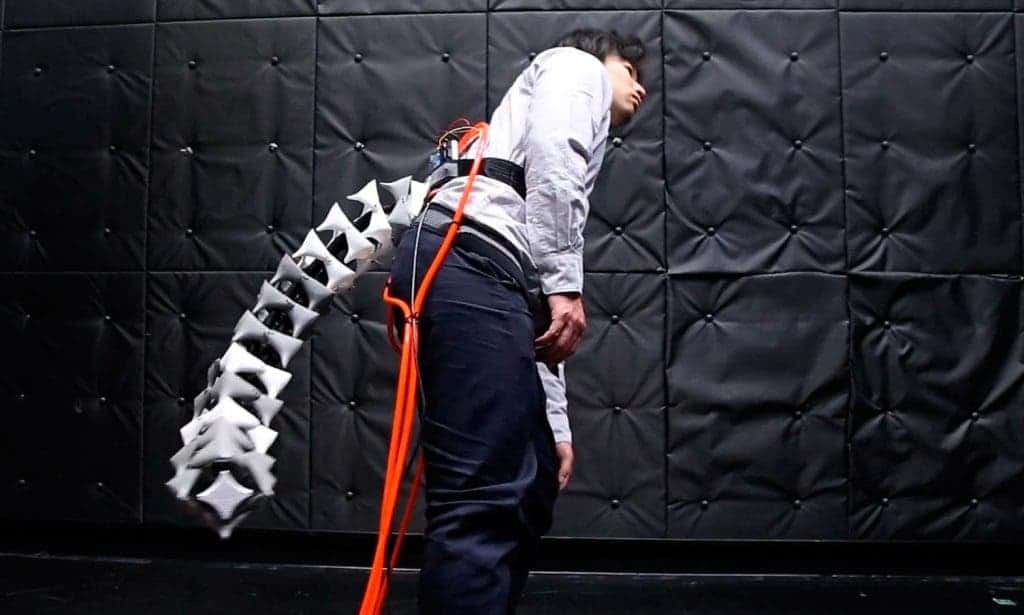It’s not how we imagined our foray into cyborg life, but it’s impressive nonetheless: a research team in Japan has developed an artificial, robotic tail, whose primary goal is to help elderly or impaired people keep their balance, but could ultimately serve multiple purposes.

Millions of years after human ancestors lost their tail through evolutionary processes, a team of Japanese researchers wants to bring it back — through science and engineering.
Having a tail can have numerous advantages, particularly when it comes to keeping balance. Fast-running creatures such as cheetahs use it to maintain balance and take curves more efficiently. Some species of climbing monkeys also use it for the same purpose, though in slightly different ways.
However, while having a tail can be an advantage, it can also be a disadvantage and get in the way. Humans lost their tail because it was almost useless for their lifestyles — it simply wasn’t efficient to use resources for a tail, given how few advantages we got from it. We still carry vestigial bones indicating that we once sported such a member.
For a team of researchers in Japan, tails may still have a lot to offer. It’s a simple concept, researchers say.
“The tail keeps balance like a pendulum,” said Junichi Nabeshima, a graduate student and researcher at the university’s Embodied Media Project, demonstrating the robotic device attached to his waist with a harness.“When humans tilt their body one way, the tail moves in the opposite direction.”
Of course, actually bringing the concept to life is a whole different challenge, but so far, results are encouraging.
Dubbed Arque, the one-meter device mimics the tails of animals such as cheetahs, which use their tails to steer and maintain balance while running and climbing. Even though the device’s wearers won’t be running like cheetahs, the principle is quite similar.
The robotic tail uses four artificial muscles and compressed air to move on eight axes. It’s still in the lab for now, as researchers test ways to make it more flexible, reliable, and robust.
As the country grapples with its ever-increasing population age, Japan wants to help keep the elderly active and safe. But in addition to keeping them up and about, developers also say the tool could be used in industrial applications, for instance to balance warehouse workers carrying heavy loads, or ease some of the load off their spine.
“I think it would be nice to incorporate this further developed prosthetic tail into daily life, when one seeks a little more help balancing,” Nabeshima said.









